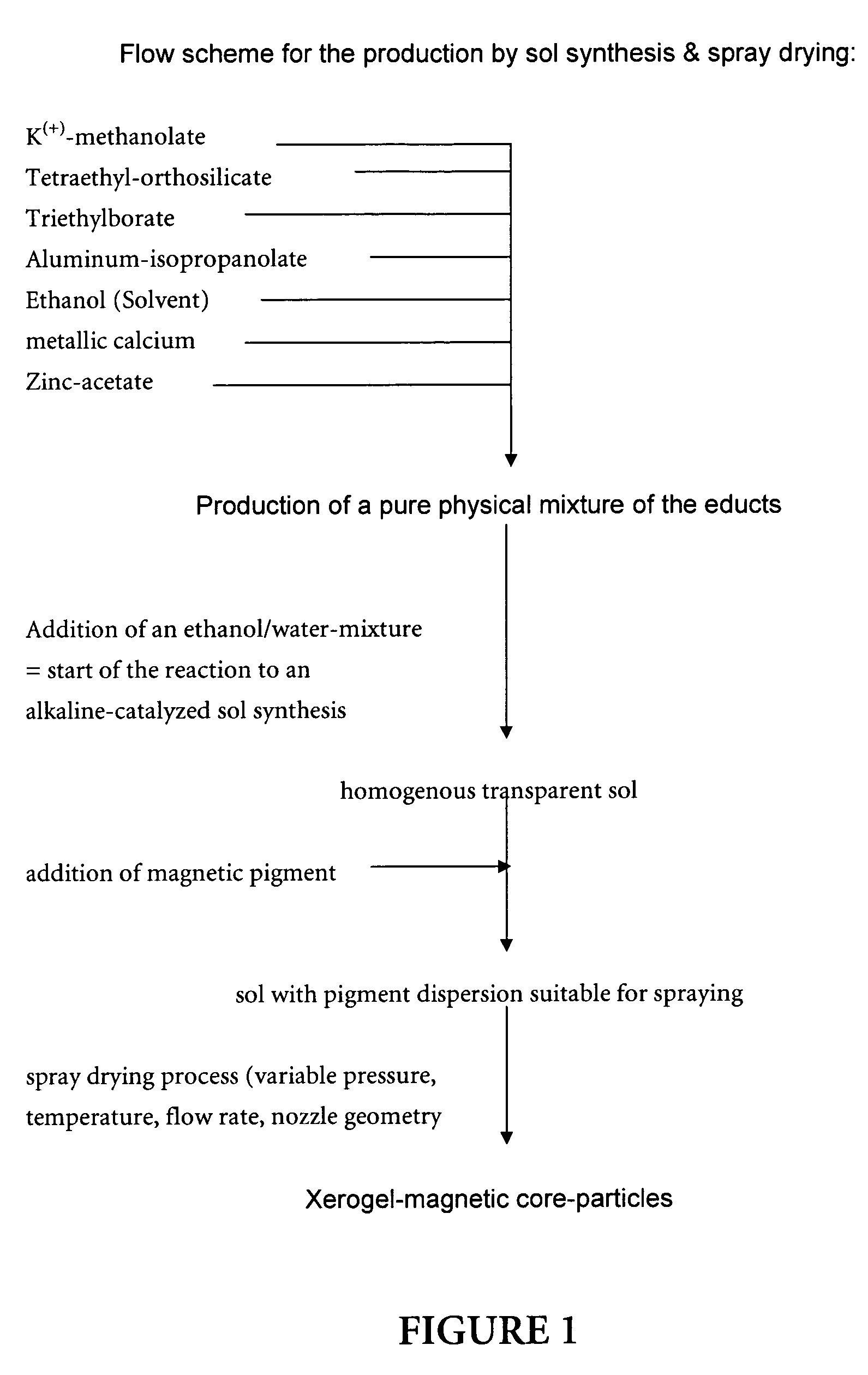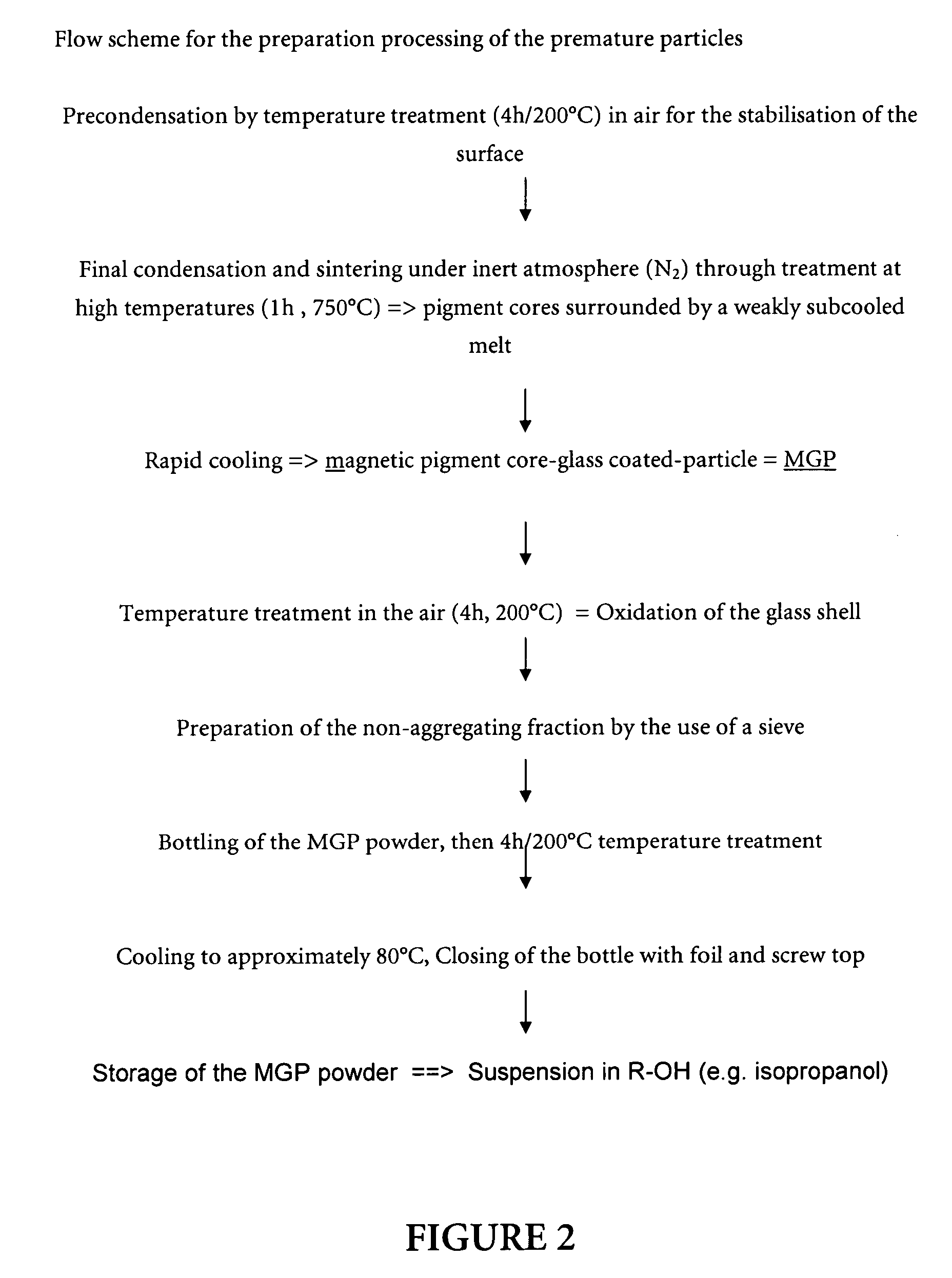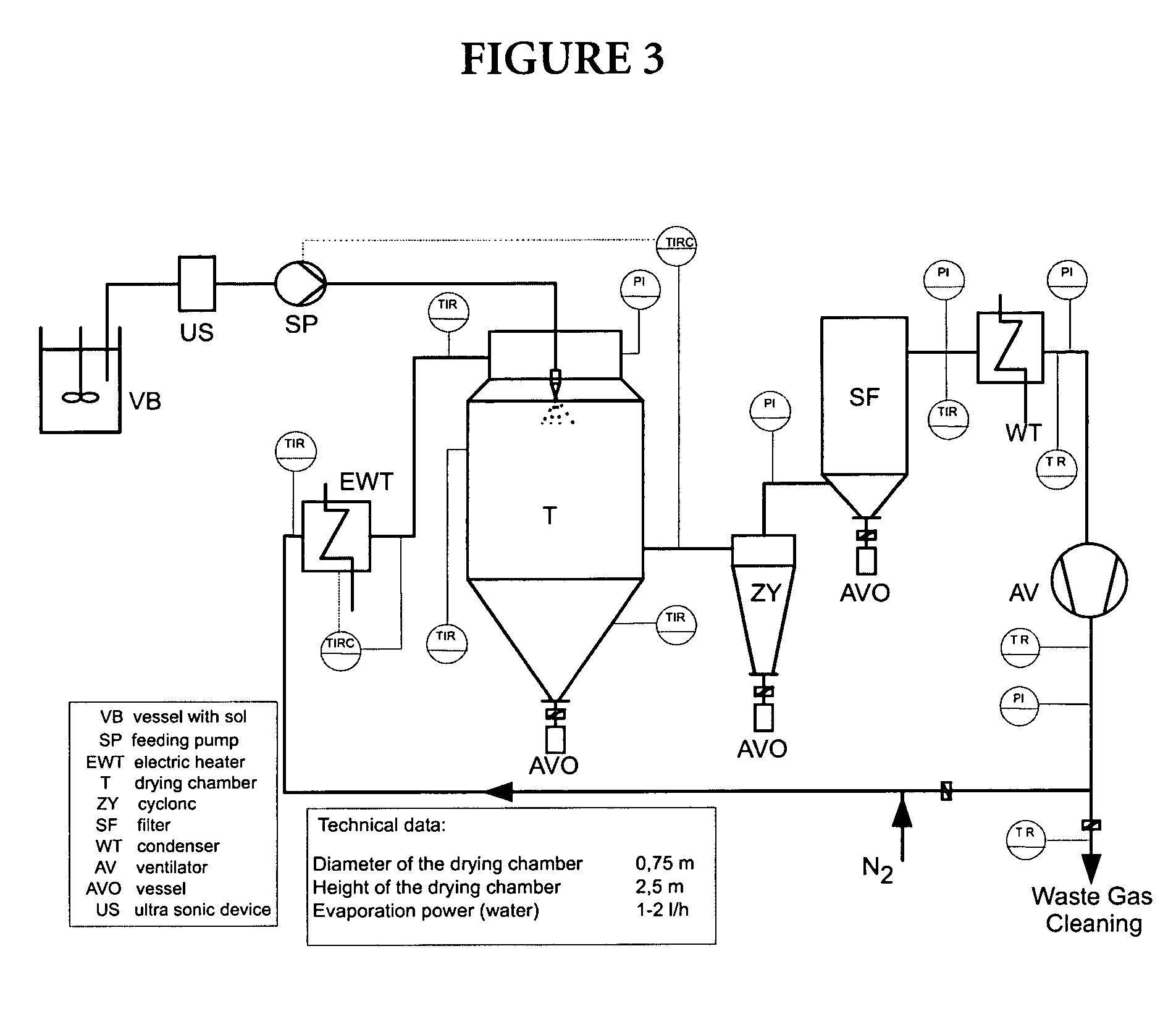Magnetic glass particles, method for their preparation and uses thereof
a technology of magnetic glass particles and glass particles, applied in the field of magnetic glass particles, can solve the problems of difficult isolation or measurement, preventing the use of a large quantity of samples, and many biological materials, especially nucleic acids, presenting special challenges in isolating them from their natural environmen
- Summary
- Abstract
- Description
- Claims
- Application Information
AI Technical Summary
Benefits of technology
Problems solved by technology
Method used
Image
Examples
example 1
1. Example 1
Production of the Magnetic Glass Particles
[0101]Classically, raw materials like SiO2 and alkali- or alkaline earth carbonates (Na2CO3, K2CO3, CaCO3) are molten together
Type of Reaction:
Na2CO3+SiO2→Na2SiO3(═Na2O.SiO2)+CO2↑
K2CO3+SiO2→K2SiO3 (═K2O.SiO2)+CO2↑
CaCO3+SiO2→CaSiO3 (═CaO.SiO2)+CO2↑
In most cases, however, a composite matrix of silicate, borate and aluminate is used, i.e. pertinent to the matrix constituents, SiO2 is partially replaced by B2O3 and Al2O3.
[0102]Alternatively, glass can be synthesized via sol-gel-reaction.
Type of Reaction:
either acid-catalyzed sol-gel reaction, e.g.
BCl3+3H2O→B(OH)3+3H(+)Cl(−)
AlCl3+3H2O→Al(OH)3+3H(+)Cl(−)
SiCl4+4H2O→Si(OH)4+4H(+)Cl(−)
Na(+)NO3(−)+H2O→Na(+)OH(−)+H(+)NO3(−)
K(+)(−)OOCCH3+H2O→K(+)OH(−)+H(+)(−)OOCCH3 [0103]or base-catalyzed, as in our case, e.g.
[0104]
[0105]Advantage: alcohols are easily evaporated during spray-drying; ideally no recristallisation of salts on the surface.
[0106]Thus, alcoholates are turned into hydroxides, w...
example 2
2. Example 2
High Resolution Scanning Electron Microscopy
[0120]To obtain information about the surface, size and form of the MGP, we carried out investigations with a high resolution scanning electron microscope manufactured by the company JEOL (JSM). The samples were spread onto the sample holder with an electrically conducting double-sided adhesive and sputtered with gold for 36 s with a current of 30 mA. For the imagining of the surface, the emitted secondary electrons (topography) as well as the back-scattered electrons (order number contrast) were viewed. The used primary electron voltage was 10 kV (secondary electrons) or 25 kV (back-scattered electrons).
[0121]The FIG. 4 shows MGPs with mica covered with ferric oxide as magnet pigment (BM). The fissure in the glass shell can be clearly seen which stem from the spray drying of the particles when the layer starts to shrink on a non-shrinking substrate (drying fissures). Further more a greater number of spheric particles can be se...
example 3
3. Example 3
Physical Investigations of the MGPs
[0122]To allow an evaluation of the MGPs before the actual functional tests, in addition the HREM investigations further physical measurements were done with the MGPs. It was interesting to learn about the iron solubility in water, the magnetic force, the fine content and the density. In the following the experiments are described and the results presented.
3.1 Extinction Measurements
[0123]To test whether the fines have been removed, 1000 mg of the temperature-treated and sieved powder, are weighed into a 50 ml centrifugation tube (Sarstedt), 40 ml water added and dispersed by shaking. Then, the tube is dipped into a ultrasonic bath (Sonorex (RK 102H; 120 / 240W) with the total filling height and is put into a magnetic separator (Roche Diagnostics GmbH RD Art.Nr. 1858 025). After 3.5 min magnetic separation, liquid is taken from the vessel with a pasteur glass pipette in the height of the 15 ml mark at the opposite side of the magnet and f...
PUM
| Property | Measurement | Unit |
|---|---|---|
| diameter | aaaaa | aaaaa |
| dissociation temperature | aaaaa | aaaaa |
| dissociation temperature | aaaaa | aaaaa |
Abstract
Description
Claims
Application Information
 Login to View More
Login to View More - R&D
- Intellectual Property
- Life Sciences
- Materials
- Tech Scout
- Unparalleled Data Quality
- Higher Quality Content
- 60% Fewer Hallucinations
Browse by: Latest US Patents, China's latest patents, Technical Efficacy Thesaurus, Application Domain, Technology Topic, Popular Technical Reports.
© 2025 PatSnap. All rights reserved.Legal|Privacy policy|Modern Slavery Act Transparency Statement|Sitemap|About US| Contact US: help@patsnap.com



